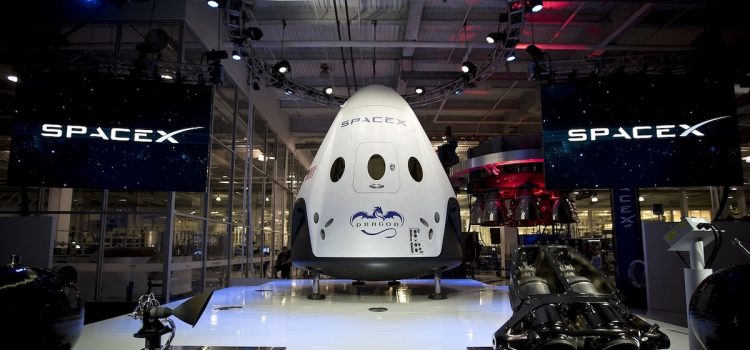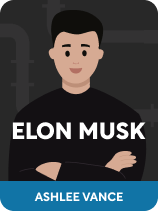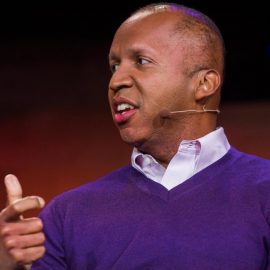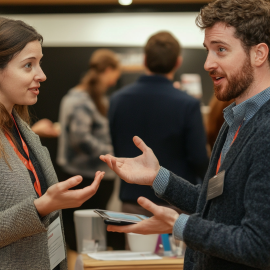

This article is an excerpt from the Shortform book guide to "Elon Musk" by Ashlee Vance. Shortform has the world's best summaries and analyses of books you should be reading.
Like this article? Sign up for a free trial here.
Why did Elon Musk start SpaceX? How has SpaceX advanced toward its ultimate goal?
After selling PayPal in 2002, Elon Musk turned his thoughts to putting his fortune to the eventual goal of colonizing Mars. The idea was that humanity’s chances of survival would be increased by spreading out to other worlds.
Keep reading to learn the story of Elon Musk and SpaceX, according to biographer Walter Isaacson.
Elon Musk and SpaceX
SpaceX was founded to take the incremental steps needed for the goal of colonizing Mars—building a reusable launch vehicle, proving that commercial spaceflight is a viable business, and designing rockets large enough to carry heavy payloads beyond the Earth’s orbit.
The story of Elon Musk and SpaceX started with the building of a reusable rocket that could launch satellites into orbit. Right away, Musk set unfeasible deadlines for a rocket launch in 2003 and an unmanned Mars mission in 2010. Neither of those goals were met, but in 2003, Musk presented his Falcon 1 rocket design and SpaceX was awarded its first government contract. Isaacson recounts how that wasn’t enough for Musk, who knew that most space industry companies received noncompetitive no-bid contracts for their work regardless of how well they performed. Musk sued NASA, arguing that no-bid contracts stifled innovation while propping up failing aerospace companies. Musk’s suit opened the door to competitive private bidding for space projects.
(Shortform note: While Isaacson presents Musk’s reasons for fighting against government no-bid contracts, there are several arguments in their favor. The process itself for soliciting bids can be time- and cost-prohibitive, especially in emergency situations when a government agency may need service quickly, such as in response to a natural disaster. In other cases, an agency may need a specific set of skills or subject expertise that only one contractor can provide. Because no-bid contracts have often been wastefully exploited, there has been substantial pushback against them such as the lawsuit Musk brought against NASA.)
After that, the history of the Falcon 1 was a string of lessons learned from mistakes. The first three Falcon 1 flights exploded shortly after liftoff, but each failure gave SpaceX more information about what worked and what didn’t in their design. The fourth SpaceX flight was successful, proving that a private company could send payloads into space at a fraction of the cost and manpower employed by enormous government contractors. In 2008, SpaceX won a $1.6 billion contract to ferry cargo and crew to the International Space Station (ISS).
(Shortform note: Learning from failure is an essential strategy taught by management and self-help experts alike. In Dare to Lead, Brené Brown insists that positive ways to turn failure into an advantage should be included as part of an organization’s onboarding process. Likewise, in The Art of Learning, chess master Josh Waitzkin suggests that you should actively seek out opportunities to fail because the faster you make mistakes, the faster your knowledge will grow. While those mistakes come at a low cost when learning to master a skill like playing chess, it takes courage to risk mistakes when launching spacecraft that cost millions of dollars.)
Fulfilling SpaceX’s new contract required a much bigger rocket. The result was the Falcon 9 and its recoverable capsule, the Dragon. The Falcon 9’s inaugural flight set the record for the largest rocket ever safely landed—those designed by rival aerospace companies were made to burn up in the atmosphere after use. Making the Falcon 9 successful required last-minute fixes and patches that would have caused NASA weeks of delays. Isaacson says that Musk’s tolerance for risk enabled SpaceX to solve problems quickly in ways that cumbersome organizations couldn’t. The Falcon 9’s success culminated in its 2020 flight of two astronauts to the ISS, the first manned American launch since the end of the Space Shuttle program in 2011.
(Shortform note: Reusable rockets weren’t invented by SpaceX. The Solid Rocket Boosters (SRBs) used to launch the Space Shuttle into orbit were designed to gently splash down at sea, where they could be recovered and reused in future missions. Likewise, a rocket that could land vertically under its own power formed the basis of the Apollo Lunar Module. However, no components of the Apollo mission were reusable. SpaceX’s Falcon 9 and Blue Origin’s New Shepard were the first reusable launch vehicles that could both take off and land successfully.)
Starlink
Funding an aerospace company isn’t easy. To do so, Musk launched Starlink, a satellite-based internet service provider. Though he never meant for Starlink to be used for military purposes, in 2022 Musk donated thousands of Starlink terminals to help restore Ukraine’s communication network during the Russian invasion. This he did for humanitarian reasons, and Starlink proved vital to holding back Russia’s advance, but Isaacson writes that Musk deactivated part of Ukraine’s Starlink access when they planned to use it in a counterattack. Musk feared that an escalation in the war might trigger a Russian nuclear response and decided that Starlink should only be used for purely defensive operations.
(Shortform note: Days before the publication of this book, Isaacson posted a retraction and clarification about his reportage on Musk disabling Starlink. According to Musk, Starlink had long been disabled in the region where Ukraine planned its offensive. Instead of deactivating Starlink at the time of the attack, a move that would have actively supported the Russian position, Musk simply denied Ukraine’s request to extend Starlink coverage into the contested region. Isaacson accepted Musk’s correction of his timeline and acknowledged that Musk’s policy of restricting Starlink’s use to defense had been established before the planned attack.)

———End of Preview———
Like what you just read? Read the rest of the world's best book summary and analysis of Ashlee Vance's "Elon Musk" at Shortform.
Here's what you'll find in our full Elon Musk summary:
- A biography of Elon Musk by renowned biographer Walter Isaacson
- Musk's traumatic South African childhood up until his Twitter takeover
- How Musk's Asperger's syndrome affected his childhood and relationships






